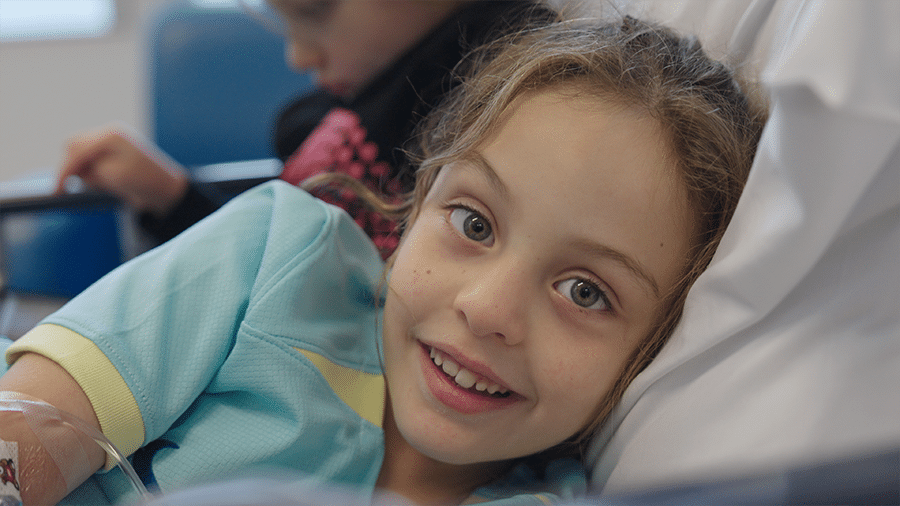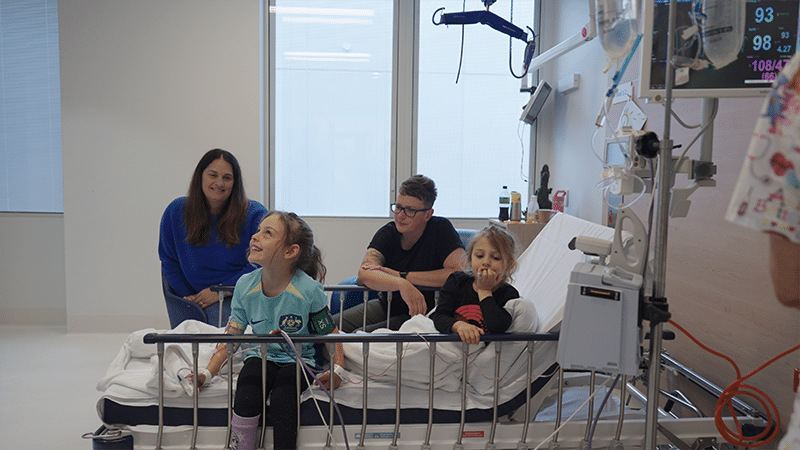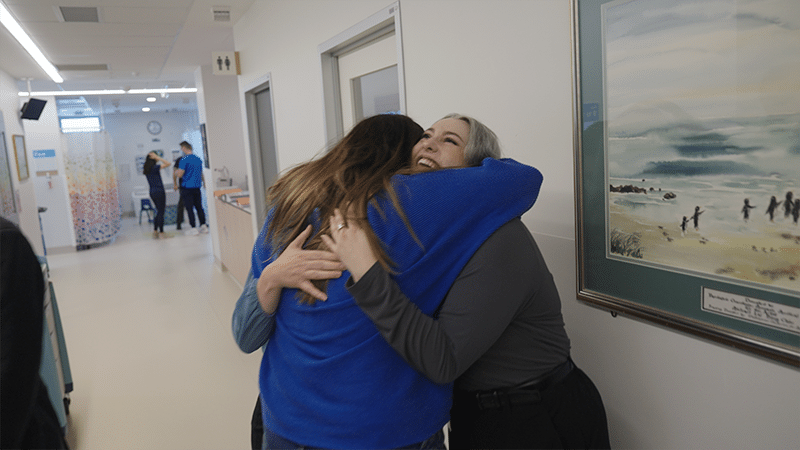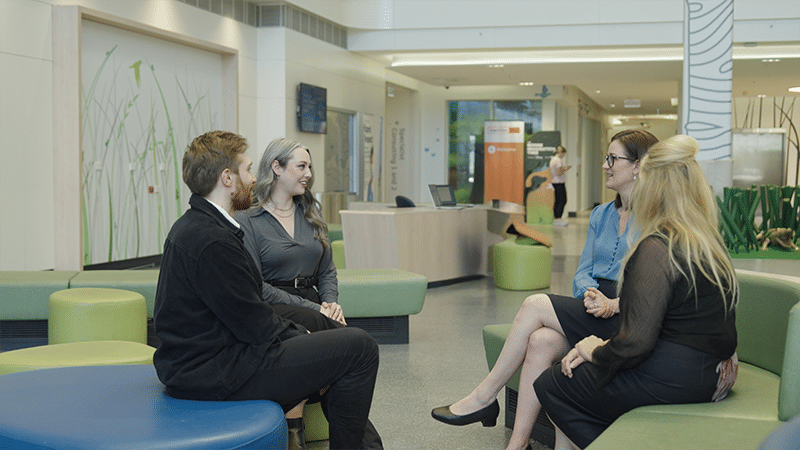
The treatment, delivered at Monash Children’s Hospital in April 2025, was made possible through the Therapeutic Goods Administration’s Special Access Scheme, in partnership with CPA’s world-leading Research Institute, Monash Health, Cell Care, and the Hudson Institute of Medical Research.
This landmark case signals hope and possibility for families across Australia and demonstrates how cell therapies like umbilical cord blood can be delivered safely in an Australian hospital setting.
Zara’s cord blood, stored privately at birth with Cell Care, was transferred to Hudson Cell Therapies in Melbourne for preparation, before being hand-delivered to Monash Children’s Hospital Cancer Centre for the infusion. Zara received the cells through a 30-minute drip infusion while engaged in play therapy, supported by her family.
The treatment came after more than a year of planning, regulatory approvals, and multidisciplinary collaboration — a process described by Professor Michael Fahey, Zara’s treating paediatric neurologist, as “planned to the minute.”
“This is something new in Australia — no one has received autologous cells, their own cells, in this setting before. And I’m really proud that we could bring the team together at Monash to make it happen,” said Prof. Fahey.
“We hope this paves the way for other children with CP to have this sort of therapy available,” he added.
Zara’s mother, Michelle, expressed both gratitude and optimism.
“The procedure was straightforward, and the staff were incredible. We hope it gives Zara even a small improvement in her daily life — that would be everything. We just wanted her to have every opportunity.”
Historically, Australian families have travelled overseas at great expense to access cord blood treatment privately. CPA estimates hundreds of families have done so, while access in Australia has remained limited to research.
Zara’s treatment changes that — and opens the door to broader advocacy, education, and future access options. CPA continues to work with families, researchers, and clinicians to explore pathways to care, support new research, and ensure that evidence-based treatments become more widely available.


More information
CPA has developed resources to help families and health professionals understand cord blood treatment for cerebral palsy, including:
Learn more and sign up for updates

This is just the beginning. Together, we can build a future where every child with cerebral palsy has access to the therapies and opportunities they deserve.